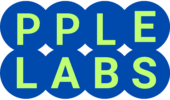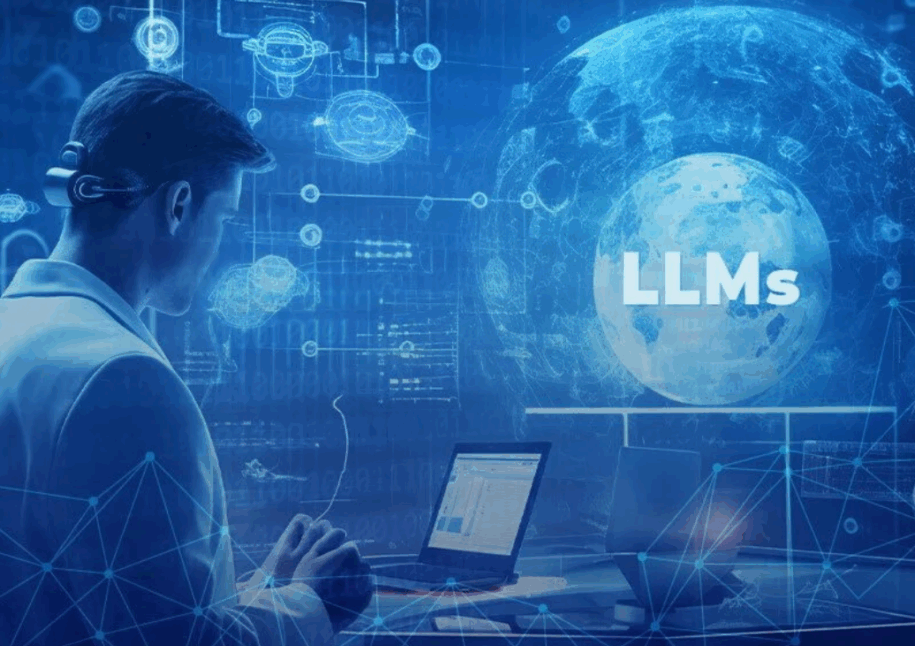Have you ever stopped to think about how much time a hospital, a place dedicated to saving lives, actually spends on paperwork? It’s a staggering amount. The modern healthcare environment is drowning in an ocean of administrative tasks, from scheduling appointments and verifying insurance to the endless cycle of documentation. This constant grind isn’t just inefficient; it’s the hidden culprit behind one of the biggest crises facing medicine today: physician burnout. This is precisely where the true potential of LLMs in Hospital Administration steps in, promising a powerful digital overhaul. We’re not talking about robots performing surgery, but about an elegant, language based technology that can lift the crushing administrative weight, allowing doctors and nurses to finally focus on patients, not clipboards. The integration of Large Language Models (LLMs) is less about cutting costs and more about a strategic re investment in human capital, creating an administrative backbone that is both resilient and remarkably efficient.
1. The Hidden Crisis: Administrative Overload and Physician Burnout
It might surprise you to learn that many healthcare providers spend more time interacting with their Electronic Health Record (EHR) system than they do with their patients. Think of your favorite doctor. Do you want them spending their evenings clicking through a complex billing interface, or getting a good night’s sleep so they can be sharp for your appointment the next day? That’s the crux of the problem. Administrative work takes up a huge chunk of a physician’s day, often extending far beyond working hours. This excessive documentation is a primary driver of burnout, pushing talented medical professionals away from the bedside and sometimes even out of the field entirely. The sheer volume of non clinical tasks creates a stressful, often unmanageable workload that directly affects the quality of care. For anyone looking to understand this critical dynamic, you can read more about how AI is fundamentally changing the way we look at healthcare in our previous post on AI & Machine Learning: The Personalized Healthcare Revolution.
2. Enter the Game Changer: Large Language Models (LLMs) in Hospital Administration
The great thing about Large Language Models is that they are built on language—the very medium that drives administrative work. An LLM can read, understand, summarize, and generate human language faster and more consistently than any human. This isn’t just theoretical; it’s an application that is already reshaping the back office. By deploying LLMs in Hospital Administration, organizations can automate vast, repetitive tasks, acting like a giant, tireless digital administrative assistant for the entire hospital. This shift frees up staff and, crucially, removes the soul crushing documentation burden that plagues clinical teams. It’s about letting machines handle the monotonous text based work so humans can focus on complex problem solving and compassionate care.
3. The Power of LLMs in Hospital Administration for Workflow Automation
Workflow automation is the engine of efficiency, and LLMs are the fuel. They excel in turning messy, unstructured data like emails, faxes, clinical notes, and patient correspondence into clean, actionable data.
3.1. Revolutionizing Revenue Cycle Management (RCM) with LLMs in Hospital Administration
If the administrative side of a hospital has a heart, it’s Revenue Cycle Management (RCM). RCM is a notoriously complex process, filled with potential bottlenecks like coding errors, insurance denials, and prior authorization headaches. Why is this so perfect for LLMs in Hospital Administration? Because it’s all about reading and writing. LLMs can instantly analyze complex insurance eligibility documents, flag potential coding errors before claims are submitted, and even draft initial appeals for denied claims. This not only speeds up the cash flow for the hospital but dramatically reduces the number of full time employees needed just to chase down and correct these linguistic errors. The use of advanced AI in this area is a powerful step towards financial stability and better overall operations.
3.2. Streamlining Patient Intake and Scheduling
Remember the last time you filled out five pages of forms in a waiting room? That’s quickly becoming a thing of the past. LLMs power the next generation of patient interaction. They can manage complex scheduling logistics by understanding natural language requests (e.g., “I need to see a cardiologist sometime next week, but only on an evening”), and instantly process and summarize new patient intake forms, extracting key information like medications and allergies straight into the EHR. This efficiency at the front end reduces wait times and improves patient satisfaction from the very first moment. For a deeper look at how this kind of technology transforms operations, check out our post on 5 Applications of OpenAI’s AgentKit in Healthcare Automation.
3.3. Transforming Clinical Documentation (AI Scribing)
Perhaps the most impactful application of LLMs in Hospital Administration is the use of ambient AI scribing. Imagine a doctor having a completely natural conversation with a patient without having to type a single word. The LLM, running in the background, listens, comprehends, and then automatically drafts a detailed, structured, and compliant clinical note. It’s like having a hyper efficient, silent stenographer who specializes in medical terminology. Studies have already shown that using tools like AI scribes dramatically reduces physician burnout by giving doctors back time they used to spend on documentation. One study, for instance, reported that AI scribes were able to dramatically reduce the odds of physicians experiencing burnout in a short time. See how this works by examining research on AI scribes reducing physician burnout. This isn’t a small efficiency; it is a fundamental restoration of the physician patient relationship.
4. Directly Addressing Physician Burnout Through LLMs in Hospital Administration
The ultimate goal of adopting these sophisticated models is to create a more human centered workplace. When the administrative burden is lifted, the impact on staff morale is immediate and profound.
4.1. Reclaiming Physician Time: The ‘Digital Scribe’ Effect
By automating up to 80% of routine documentation and administrative follow up, LLMs in Hospital Administration directly give time back to physicians. Instead of staying late to finish charts, they can now leave on time. Instead of spending weekends in front of a computer, they can spend it with their families. This reclaimed time is essential for combating emotional exhaustion and depersonalization—the core components of burnout. It transforms the job from a high stakes paper pushing contest back into the meaningful practice of medicine. Automation ensures that repetitive tasks are handled consistently, which, as we’ve explored in another context, helps streamline processes in complex settings like behavioral health, thereby reducing friction for clinicians. You can explore this further in our article on The Impact of Workflow Automation on Behavioral Health Services.
4.2. Enhancing Communication and Care Coordination
Hospitals are networks of constantly moving parts. Missed communication can lead to delays, errors, and frustration for both staff and patients. LLMs excel at summarizing complex patient histories for quick hand offs, drafting discharge instructions in plain, easy to understand language, and ensuring all follow up steps are scheduled and communicated seamlessly. They act as a universal translator, ensuring that communication between the financial, clinical, and patient facing sides of the hospital is clear and consistent. For more on the technical side of how these complex systems integrate and communicate, you may find this comprehensive review on Large Language Models in Healthcare to be insightful.
5. Navigating the Challenges of Implementing LLMs in Hospital Administration
Of course, using a powerful new technology like this isn’t without its caveats. The healthcare sector has unique requirements that make implementation a careful, strategic process.
5.1. Data Privacy and HIPAA Compliance
The most critical challenge when discussing LLMs in Hospital Administration is safeguarding Protected Health Information (PHI). We are dealing with deeply sensitive data, and any system using it must be rigorously compliant with regulations like HIPAA. This means the models must be deployed securely, often within a private or “on premise” environment, and training data must be properly anonymized or de identified. For an in depth understanding of the necessary compliance steps, take a look at our post on Healthcare Data for LLMs: Prepare Information for Compliance. Security must be built into the system from the ground up—it can’t be an afterthought.
5.2. Ensuring Accuracy and Mitigating “Hallucinations”
LLMs are known to sometimes “hallucinate,” meaning they generate content that sounds authoritative but is factually incorrect. In the context of drafting a marketing email, this is a minor issue. In hospital administration, it could be catastrophic imagine a scheduling summary with the wrong date or a billing code that simply doesn’t exist. This risk is managed by keeping the models focused on administrative, non clinical tasks where human review is still the final safeguard, and by fine tuning the models on strictly curated, accurate hospital data. This balance is key to realizing the potential of LLMs in Hospital Administration. You can read more about how AI is being strategically applied in this area in this piece on LLMs for Healthcare Administration.
Conclusion: The Future of Efficient and Human-Centric Healthcare
The integration of LLMs in Hospital Administration is far more than a passing technology trend; it is a vital, necessary evolution for a healthcare system struggling under its own bureaucratic weight. By automating complex and repetitive tasks like RCM, documentation, and scheduling, these powerful models are solving the hidden crisis of administrative overload. The result isn’t just a more efficient, cost effective hospital though it is certainly that, as detailed in an article on healthcare workflow automation and its benefits, the true impact is a human one. It allows physicians and nurses to step away from their screens, reduce their burnout, and return their focus to the core mission: providing compassionate, exceptional patient care. It’s an investment in technology that pays the highest dividend in human wellbeing.
Frequently Asked Questions (FAQs)
Q1. Are LLMs only used for clinical tasks like diagnosis in healthcare?
Absolutely not! While LLMs have a role in clinical support, their biggest immediate impact is in non clinical, administrative areas. The primary use of LLMs in Hospital Administration is to automate back office workflows, documentation, scheduling, and Revenue Cycle Management (RCM) tasks. This focus on administrative efficiency is the quickest way to reduce staff burnout and operational costs.
Q2. How do LLMs specifically help with Revenue Cycle Management (RCM)?
LLMs analyze and interpret complex, unstructured data common in RCM, such as insurance forms, clinical notes for coding, and denial letters. They can automatically check for coding compliance, draft initial authorization requests, and summarize payment statuses, drastically speeding up the claim process and reducing the rate of claim denials.
Q3. What is the role of LLMs in reducing physician burnout?
The main driver of physician burnout is the excessive time spent on electronic health record (EHR) documentation. LLMs address this by acting as “ambient AI scribes.” They listen to the natural patient physician conversation and automatically generate the detailed, compliant clinical note, giving physicians their time back and letting them focus entirely on the patient.
Q4. Is it safe to use LLMs with sensitive patient data, given HIPAA regulations?
Security and compliance are paramount. When deployed correctly, LLMs in Hospital Administration operate within strict, secure environments. This often involves using de identified data for training and deploying the models in a way that all Protected Health Information (PHI) remains secure and compliant with regulations like HIPAA. This is a topic of constant focus, as you can see from our discussion on Healthcare Insurance: Understanding Medicaid and Medicare which touches upon financial risk and compliance.
Q5. How is this different from older forms of healthcare automation?
Older automation often relies on Robotic Process Automation (RPA), which is based on fixed, repetitive “if then” rules. LLMs, however, use Natural Language Processing (NLP) to understand context, intent, and meaning from human language. This allows them to handle complex, variable tasks like summarizing a multi page patient history, which is a key advantage for projects like Generative AI for Drug Discovery and other complex tasks requiring linguistic intelligence.


Leave a Reply